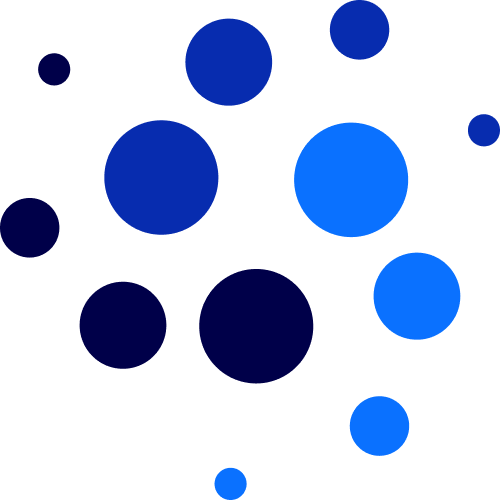Materials Science and Engineering C, volume 57, pages 222-231
Cytotoxicity assessment of functionalized CdSe, CdTe and InP quantum dots in two human cancer cell models
Jing Liu
1
,
Rui Hu
2, 3, 4
,
Jianwei Liu
1
,
Butian Zhang
2, 3, 4
,
Yucheng Wang
2, 3, 4
,
Xin Liu
5
,
Wing-Cheung Law
6
,
Liwei Liu
7
,
LING YE
1
,
Ken-Tye Yong
2, 3, 4
2
50 Nanyang Avenue Singapore 639798 Singapore
|
4
School of Electrical and Electronic Engineering
6
Department of Industrial and System Engineering, The Hang Kong Polytechnic University, Hung Hom, Hong Kong.
|
7
School of Science, Changchun University of Science and Technology,Changchun 130022,PR China
|
Publication type: Journal Article
Publication date: 2015-12-01
Journal:
Materials Science and Engineering C
Quartile SCImago
Q1
Quartile WOS
Q1
Impact factor: 7.9
ISSN: 09284931, 18730191
Bioengineering
Biomaterials
Mechanics of Materials
Abstract
The toxicity of quantum dots (QDs) has been extensively studied over the past decade. Some common factors that originate the QD toxicity include releasing of heavy metal ions from degraded QDs and the generation of reactive oxygen species on the QD surface. In addition to these factors, we should also carefully examine other potential QD toxicity causes that will play crucial roles in impacting the overall biological system. In this contribution, we have performed cytotoxicity assessment of four types of QD formulations in two different human cancer cell models. The four types of QD formulations, namely, mercaptopropionic acid modified CdSe/CdS/ZnS QDs (CdSe-MPA), PEGylated phospholipid encapsulated CdSe/CdS/ZnS QDs (CdSe-Phos), PEGylated phospholipid encapsulated InP/ZnS QDs (InP-Phos) and Pluronic F127 encapsulated CdTe/ZnS QDs (CdTe-F127), are representatives for the commonly used QD formulations in biomedical applications. Both the core materials and the surface modifications have been taken into consideration as the key factors for the cytotoxicity assessment. Through side-by-side comparison and careful evaluations, we have found that the toxicity of QDs does not solely depend on a single factor in initiating the toxicity in biological system but rather it depends on a combination of elements from the particle formulations. More importantly, our toxicity assessment shows different cytotoxicity trend for all the prepared formulations tested on gastric adenocarcinoma (BGC-823) and neuroblastoma (SH-SY5Y) cell lines. We have further proposed that the cellular uptake of these nanocrystals plays an important role in determining the final faith of the toxicity impact of the formulation. The result here suggests that the toxicity of QDs is rather complex and it cannot be generalized under a few assumptions reported previously. We suggest that one have to evaluate the QD toxicity on a case to case basis and this indicates that standard procedures and comprehensive protocols are urgently needed to be developed and employed for fully assessing and understanding the origins of the toxicity arising from different QD formulations.
Top-30
Citations by journals
|
2
4
6
8
10
12
14
|
|
|
Materials Science and Engineering C
13 publications, 15.12%
|
|
|
International Journal of Molecular Sciences
3 publications, 3.49%
|
|
|
Nanomaterials
3 publications, 3.49%
|
|
|
Dyes and Pigments
2 publications, 2.33%
|
|
|
Acta Biomaterialia
2 publications, 2.33%
|
|
|
Colloids and Surfaces B: Biointerfaces
2 publications, 2.33%
|
|
|
Applied Surface Science
2 publications, 2.33%
|
|
|
Journal of Drug Targeting
2 publications, 2.33%
|
|
|
Cells
1 publication, 1.16%
|
|
|
Nano
1 publication, 1.16%
|
|
|
Sensors
1 publication, 1.16%
|
|
|
Cancers
1 publication, 1.16%
|
|
|
Molecules
1 publication, 1.16%
|
|
|
Genes
1 publication, 1.16%
|
|
|
Coatings
1 publication, 1.16%
|
|
|
Frontiers in Toxicology
1 publication, 1.16%
|
|
|
Research on Chemical Intermediates
1 publication, 1.16%
|
|
|
Chemical Papers
1 publication, 1.16%
|
|
|
Journal of Fluorescence
1 publication, 1.16%
|
|
|
Biophysical Reviews
1 publication, 1.16%
|
|
|
Science China Materials
1 publication, 1.16%
|
|
|
Chemical Reviews
1 publication, 1.16%
|
|
|
Pharmaceutics
1 publication, 1.16%
|
|
|
Scientific Reports
1 publication, 1.16%
|
|
|
Mendeleev Communications
1 publication, 1.16%
|
|
|
Coordination Chemistry Reviews
1 publication, 1.16%
|
|
|
Journal of Photochemistry and Photobiology A: Chemistry
1 publication, 1.16%
|
|
|
Carbon
1 publication, 1.16%
|
|
|
Colloids and Surfaces A: Physicochemical and Engineering Aspects
1 publication, 1.16%
|
|
|
2
4
6
8
10
12
14
|
Citations by publishers
|
5
10
15
20
25
30
35
40
45
|
|
|
Elsevier
41 publications, 47.67%
|
|
|
Multidisciplinary Digital Publishing Institute (MDPI)
13 publications, 15.12%
|
|
|
Springer Nature
8 publications, 9.3%
|
|
|
American Chemical Society (ACS)
4 publications, 4.65%
|
|
|
Wiley
4 publications, 4.65%
|
|
|
Royal Society of Chemistry (RSC)
4 publications, 4.65%
|
|
|
Taylor & Francis
2 publications, 2.33%
|
|
|
World Scientific
1 publication, 1.16%
|
|
|
Frontiers Media S.A.
1 publication, 1.16%
|
|
|
Taiwan Institute of Chemical Engineers
1 publication, 1.16%
|
|
|
IOS Press
1 publication, 1.16%
|
|
|
Dove Medical Press
1 publication, 1.16%
|
|
|
IOP Publishing
1 publication, 1.16%
|
|
|
Autonomous Non-profit Organization Editorial Board of the journal Uspekhi Khimii
1 publication, 1.16%
|
|
|
5
10
15
20
25
30
35
40
45
|
- We do not take into account publications without a DOI.
- Statistics recalculated only for publications connected to researchers, organizations and labs registered on the platform.
- Statistics recalculated weekly.
{"yearsCitations":{"type":"bar","data":{"show":true,"labels":[2016,2017,2018,2019,2020,2021,2022,2023,2024],"ids":[0,0,0,0,0,0,0,0,0],"codes":[0,0,0,0,0,0,0,0,0],"imageUrls":["","","","","","","","",""],"datasets":[{"label":"Citations number","data":[6,23,8,10,10,8,3,11,7],"backgroundColor":["#3B82F6","#3B82F6","#3B82F6","#3B82F6","#3B82F6","#3B82F6","#3B82F6","#3B82F6","#3B82F6"],"percentage":["6.98","26.74","9.3","11.63","11.63","9.3","3.49","12.79","8.14"],"barThickness":null}]},"options":{"indexAxis":"x","maintainAspectRatio":true,"scales":{"y":{"ticks":{"precision":0,"autoSkip":false,"font":{"family":"Montserrat"},"color":"#000000"},"stacked":false},"x":{"ticks":{"stepSize":1,"precision":0,"font":{"family":"Montserrat"},"color":"#000000"},"stacked":false}},"plugins":{"legend":{"position":"top","labels":{"font":{"family":"Montserrat"},"color":"#000000"}},"title":{"display":true,"text":"Citations per year","font":{"size":24,"family":"Montserrat","weight":600},"color":"#000000"}}}},"journals":{"type":"bar","data":{"show":true,"labels":["Materials Science and Engineering C","International Journal of Molecular Sciences","Nanomaterials","Dyes and Pigments","Acta Biomaterialia","Colloids and Surfaces B: Biointerfaces","Applied Surface Science","Journal of Drug Targeting","Cells","Nano","Sensors","Cancers","Molecules","Genes","Coatings","Frontiers in Toxicology","Research on Chemical Intermediates","Chemical Papers","Journal of Fluorescence","Biophysical Reviews","Science China Materials","Chemical Reviews","Pharmaceutics","Scientific Reports","Mendeleev Communications","Coordination Chemistry Reviews","Journal of Photochemistry and Photobiology A: Chemistry","Carbon","Colloids and Surfaces A: Physicochemical and Engineering Aspects"],"ids":[10666,14627,10051,10101,9874,2020,12539,15730,25293,16467,18435,22471,1770,8879,24427,28319,10787,4048,21006,79,23382,13718,4502,13767,5294,13437,18164,37,21908],"codes":[0,0,0,0,0,0,0,0,0,0,0,0,0,0,0,0,0,0,0,0,0,0,0,0,0,0,0,0,0],"imageUrls":["\/storage\/images\/resized\/GDnYOu1UpMMfMMRV6Aqle4H0YLLsraeD9IP9qScG_medium.webp","\/storage\/images\/resized\/MjH1ITP7lMYGxeqUZfkt2BnVLgjkk413jwBV97XX_medium.webp","\/storage\/images\/resized\/MjH1ITP7lMYGxeqUZfkt2BnVLgjkk413jwBV97XX_medium.webp","\/storage\/images\/resized\/GDnYOu1UpMMfMMRV6Aqle4H0YLLsraeD9IP9qScG_medium.webp","\/storage\/images\/resized\/GDnYOu1UpMMfMMRV6Aqle4H0YLLsraeD9IP9qScG_medium.webp","\/storage\/images\/resized\/GDnYOu1UpMMfMMRV6Aqle4H0YLLsraeD9IP9qScG_medium.webp","\/storage\/images\/resized\/GDnYOu1UpMMfMMRV6Aqle4H0YLLsraeD9IP9qScG_medium.webp","\/storage\/images\/resized\/5YZtvLvkPZuc2JHOaZsjCvGSHFCuC3drUwN3YAc5_medium.webp","\/storage\/images\/resized\/MjH1ITP7lMYGxeqUZfkt2BnVLgjkk413jwBV97XX_medium.webp","\/storage\/images\/resized\/jZQkhOOcY9wrGwZm7XGRwMe8H7fThQu3KamISuun_medium.webp","\/storage\/images\/resized\/MjH1ITP7lMYGxeqUZfkt2BnVLgjkk413jwBV97XX_medium.webp","\/storage\/images\/resized\/MjH1ITP7lMYGxeqUZfkt2BnVLgjkk413jwBV97XX_medium.webp","\/storage\/images\/resized\/MjH1ITP7lMYGxeqUZfkt2BnVLgjkk413jwBV97XX_medium.webp","\/storage\/images\/resized\/MjH1ITP7lMYGxeqUZfkt2BnVLgjkk413jwBV97XX_medium.webp","\/storage\/images\/resized\/MjH1ITP7lMYGxeqUZfkt2BnVLgjkk413jwBV97XX_medium.webp","\/storage\/images\/resized\/4QWA67eqfcfyOiA8Wk7YnqroHFqQbTsmDJUYTCTg_medium.webp","\/storage\/images\/resized\/voXLqlsvTwv5p3iMQ8Dhs95nqB4AXOG7Taj7G4ra_medium.webp","\/storage\/images\/resized\/voXLqlsvTwv5p3iMQ8Dhs95nqB4AXOG7Taj7G4ra_medium.webp","\/storage\/images\/resized\/voXLqlsvTwv5p3iMQ8Dhs95nqB4AXOG7Taj7G4ra_medium.webp","\/storage\/images\/resized\/voXLqlsvTwv5p3iMQ8Dhs95nqB4AXOG7Taj7G4ra_medium.webp","\/storage\/images\/resized\/voXLqlsvTwv5p3iMQ8Dhs95nqB4AXOG7Taj7G4ra_medium.webp","\/storage\/images\/resized\/iLiQsFqFaSEx6chlGQ5fbAwF6VYU3WWa08hkss0g_medium.webp","\/storage\/images\/resized\/MjH1ITP7lMYGxeqUZfkt2BnVLgjkk413jwBV97XX_medium.webp","\/storage\/images\/resized\/voXLqlsvTwv5p3iMQ8Dhs95nqB4AXOG7Taj7G4ra_medium.webp","\/storage\/images\/resized\/GDnYOu1UpMMfMMRV6Aqle4H0YLLsraeD9IP9qScG_medium.webp","\/storage\/images\/resized\/GDnYOu1UpMMfMMRV6Aqle4H0YLLsraeD9IP9qScG_medium.webp","\/storage\/images\/resized\/GDnYOu1UpMMfMMRV6Aqle4H0YLLsraeD9IP9qScG_medium.webp","\/storage\/images\/resized\/GDnYOu1UpMMfMMRV6Aqle4H0YLLsraeD9IP9qScG_medium.webp","\/storage\/images\/resized\/GDnYOu1UpMMfMMRV6Aqle4H0YLLsraeD9IP9qScG_medium.webp"],"datasets":[{"label":"","data":[13,3,3,2,2,2,2,2,1,1,1,1,1,1,1,1,1,1,1,1,1,1,1,1,1,1,1,1,1],"backgroundColor":["#3B82F6","#3B82F6","#3B82F6","#3B82F6","#3B82F6","#3B82F6","#3B82F6","#3B82F6","#3B82F6","#3B82F6","#3B82F6","#3B82F6","#3B82F6","#3B82F6","#3B82F6","#3B82F6","#3B82F6","#3B82F6","#3B82F6","#3B82F6","#3B82F6","#3B82F6","#3B82F6","#3B82F6","#3B82F6","#3B82F6","#3B82F6","#3B82F6","#3B82F6"],"percentage":[15.12,3.49,3.49,2.33,2.33,2.33,2.33,2.33,1.16,1.16,1.16,1.16,1.16,1.16,1.16,1.16,1.16,1.16,1.16,1.16,1.16,1.16,1.16,1.16,1.16,1.16,1.16,1.16,1.16],"barThickness":13}]},"options":{"indexAxis":"y","maintainAspectRatio":false,"scales":{"y":{"ticks":{"precision":0,"autoSkip":false,"font":{"family":"Montserrat"},"color":"#000000"},"stacked":false},"x":{"ticks":{"stepSize":null,"precision":0,"font":{"family":"Montserrat"},"color":"#000000"},"stacked":false}},"plugins":{"legend":{"position":"top","labels":{"font":{"family":"Montserrat"},"color":"#000000"}},"title":{"display":true,"text":"Journals","font":{"size":24,"family":"Montserrat","weight":600},"color":"#000000"}}}},"publishers":{"type":"bar","data":{"show":true,"labels":["Elsevier","Multidisciplinary Digital Publishing Institute (MDPI)","Springer Nature","American Chemical Society (ACS)","Wiley","Royal Society of Chemistry (RSC)","Taylor & Francis","World Scientific","Frontiers Media S.A.","Taiwan Institute of Chemical Engineers","IOS Press","Dove Medical Press","IOP Publishing","Autonomous Non-profit Organization Editorial Board of the journal Uspekhi Khimii"],"ids":[17,202,8,40,11,123,18,23,208,5505,29,417,2075,9422],"codes":[0,0,0,0,0,0,0,0,0,0,0,0,0,0],"imageUrls":["\/storage\/images\/resized\/GDnYOu1UpMMfMMRV6Aqle4H0YLLsraeD9IP9qScG_medium.webp","\/storage\/images\/resized\/MjH1ITP7lMYGxeqUZfkt2BnVLgjkk413jwBV97XX_medium.webp","\/storage\/images\/resized\/voXLqlsvTwv5p3iMQ8Dhs95nqB4AXOG7Taj7G4ra_medium.webp","\/storage\/images\/resized\/iLiQsFqFaSEx6chlGQ5fbAwF6VYU3WWa08hkss0g_medium.webp","\/storage\/images\/resized\/bRyGpdm98BkAUYiK1YFNpl5Z7hPu6Gd87gbIeuG3_medium.webp","\/storage\/images\/resized\/leiAYcRDGTSl5B1eCnwpSGqmDEUEfDPPoYisFGhT_medium.webp","\/storage\/images\/resized\/5YZtvLvkPZuc2JHOaZsjCvGSHFCuC3drUwN3YAc5_medium.webp","\/storage\/images\/resized\/jZQkhOOcY9wrGwZm7XGRwMe8H7fThQu3KamISuun_medium.webp","\/storage\/images\/resized\/4QWA67eqfcfyOiA8Wk7YnqroHFqQbTsmDJUYTCTg_medium.webp","","\/storage\/images\/resized\/KqWdDIHwzps3KNMz2kSZBC4SgMnkL3bwEKJqtZ2u_medium.webp","\/storage\/images\/resized\/wVWp6zaxUsMdR03dYMdOZoesUrVGtNMWkHKByIvT_medium.webp","\/storage\/images\/resized\/LsKy6OnmmmRGcAU6CZgWQvNiP1polbaSLNrN7zqj_medium.webp","\/storage\/images\/resized\/9Mus3KG1Tkd7Bwaurt8H3RwWh0CxRlGoO6ng9UK1_medium.webp"],"datasets":[{"label":"","data":[41,13,8,4,4,4,2,1,1,1,1,1,1,1],"backgroundColor":["#3B82F6","#3B82F6","#3B82F6","#3B82F6","#3B82F6","#3B82F6","#3B82F6","#3B82F6","#3B82F6","#3B82F6","#3B82F6","#3B82F6","#3B82F6","#3B82F6"],"percentage":[47.67,15.12,9.3,4.65,4.65,4.65,2.33,1.16,1.16,1.16,1.16,1.16,1.16,1.16],"barThickness":13}]},"options":{"indexAxis":"y","maintainAspectRatio":false,"scales":{"y":{"ticks":{"precision":0,"autoSkip":false,"font":{"family":"Montserrat"},"color":"#000000"},"stacked":false},"x":{"ticks":{"stepSize":null,"precision":0,"font":{"family":"Montserrat"},"color":"#000000"},"stacked":false}},"plugins":{"legend":{"position":"top","labels":{"font":{"family":"Montserrat"},"color":"#000000"}},"title":{"display":true,"text":"Publishers","font":{"size":24,"family":"Montserrat","weight":600},"color":"#000000"}}}},"yearsCitationsQuartiles":{"type":"bar","data":{"show":true,"labels":[2016,2017,2018,2019,2020,2021,2022,2023,2024],"ids":[],"codes":[],"imageUrls":[],"datasets":[{"label":"Q4","backgroundColor":"rgb(221,90,78)","data":[0,0,0,0,0,0,0,0,0],"percentage":["0","0","0","0","0","0","0","0","0"]},{"label":"Q3","backgroundColor":"rgb(251, 163,83)","data":[1,1,0,1,0,0,0,1,0],"percentage":["1.16","1.16","0","1.16","0","0","0","1.16","0"]},{"label":"Q2","backgroundColor":"rgb(232, 213, 89)","data":[0,1,0,1,0,3,1,1,2],"percentage":["0","1.16","0","1.16","0","3.49","1.16","1.16","2.33"]},{"label":"Q1","backgroundColor":"rgb(164, 207, 99)","data":[4,20,7,8,10,4,1,6,5],"percentage":["4.65","23.26","8.14","9.3","11.63","4.65","1.16","6.98","5.81"]},{"label":"Quartile not defined","backgroundColor":"#E5E7EB","data":[1,1,1,0,0,1,1,3,0],"percentage":["1.16","1.16","1.16","0","0","1.16","1.16","3.49","0"]}]},"options":{"indexAxis":"x","maintainAspectRatio":true,"scales":{"y":{"ticks":{"precision":0,"autoSkip":false,"font":{"family":"Montserrat"},"color":"#000000"},"stacked":true},"x":{"ticks":{"stepSize":1,"precision":0,"font":{"family":"Montserrat"},"color":"#000000"},"stacked":true}},"plugins":{"legend":{"position":"top","labels":{"font":{"family":"Montserrat"},"color":"#000000"}},"title":{"display":true,"text":"Citations quartiles by SCImago per year","font":{"size":24,"family":"Montserrat","weight":600},"color":"#000000"}}}},"yearsCitationsQuartilesWs":{"type":"bar","data":{"show":true,"labels":[2016,2017,2018,2019,2020,2021,2022,2023,2024],"ids":[],"codes":[],"imageUrls":[],"datasets":[{"label":"Q4","backgroundColor":"rgb(221,90,78)","data":[1,1,0,1,0,0,0,0,0],"percentage":["1.16","1.16","0","1.16","0","0","0","0","0"]},{"label":"Q3","backgroundColor":"rgb(251, 163,83)","data":[1,1,0,0,0,0,1,2,0],"percentage":["1.16","1.16","0","0","0","0","1.16","2.33","0"]},{"label":"Q2","backgroundColor":"rgb(232, 213, 89)","data":[0,2,2,4,1,3,0,2,2],"percentage":["0","2.33","2.33","4.65","1.16","3.49","0","2.33","2.33"]},{"label":"Q1","backgroundColor":"rgb(164, 207, 99)","data":[3,18,5,5,8,4,1,3,5],"percentage":["3.49","20.93","5.81","5.81","9.3","4.65","1.16","3.49","5.81"]},{"label":"Quartile not defined","backgroundColor":"#E5E7EB","data":[1,1,1,0,1,1,1,4,0],"percentage":["1.16","1.16","1.16","0","1.16","1.16","1.16","4.65","0"]}]},"options":{"indexAxis":"x","maintainAspectRatio":true,"scales":{"y":{"ticks":{"precision":0,"autoSkip":false,"font":{"family":"Montserrat"},"color":"#000000"},"stacked":true},"x":{"ticks":{"stepSize":1,"precision":0,"font":{"family":"Montserrat"},"color":"#000000"},"stacked":true}},"plugins":{"legend":{"position":"top","labels":{"font":{"family":"Montserrat"},"color":"#000000"}},"title":{"display":true,"text":"Citations quartiles by WoS per year","font":{"size":24,"family":"Montserrat","weight":600},"color":"#000000"}}}}}
Are you a researcher?
Create a profile to get free access to personal recommendations for colleagues and new articles.
Metrics
Cite this
GOST |
RIS |
BibTex
Cite this
GOST
Copy
Liu J. et al. Cytotoxicity assessment of functionalized CdSe, CdTe and InP quantum dots in two human cancer cell models // Materials Science and Engineering C. 2015. Vol. 57. pp. 222-231.
GOST all authors (up to 50)
Copy
Liu J., Hu R., Liu J., Zhang B., Wang Y., Liu X., Law W., Liu L., YE L., Yong K. Cytotoxicity assessment of functionalized CdSe, CdTe and InP quantum dots in two human cancer cell models // Materials Science and Engineering C. 2015. Vol. 57. pp. 222-231.
Cite this
RIS
Copy
TY - JOUR
DO - 10.1016/j.msec.2015.07.044
UR - https://doi.org/10.1016/j.msec.2015.07.044
TI - Cytotoxicity assessment of functionalized CdSe, CdTe and InP quantum dots in two human cancer cell models
T2 - Materials Science and Engineering C
AU - Liu, Jing
AU - Hu, Rui
AU - Liu, Jianwei
AU - Zhang, Butian
AU - Wang, Yucheng
AU - Liu, Xin
AU - Law, Wing-Cheung
AU - Liu, Liwei
AU - YE, LING
AU - Yong, Ken-Tye
PY - 2015
DA - 2015/12/01 00:00:00
PB - Elsevier
SP - 222-231
VL - 57
SN - 0928-4931
SN - 1873-0191
ER -
Cite this
BibTex
Copy
@article{2015_Liu,
author = {Jing Liu and Rui Hu and Jianwei Liu and Butian Zhang and Yucheng Wang and Xin Liu and Wing-Cheung Law and Liwei Liu and LING YE and Ken-Tye Yong},
title = {Cytotoxicity assessment of functionalized CdSe, CdTe and InP quantum dots in two human cancer cell models},
journal = {Materials Science and Engineering C},
year = {2015},
volume = {57},
publisher = {Elsevier},
month = {dec},
url = {https://doi.org/10.1016/j.msec.2015.07.044},
pages = {222--231},
doi = {10.1016/j.msec.2015.07.044}
}













